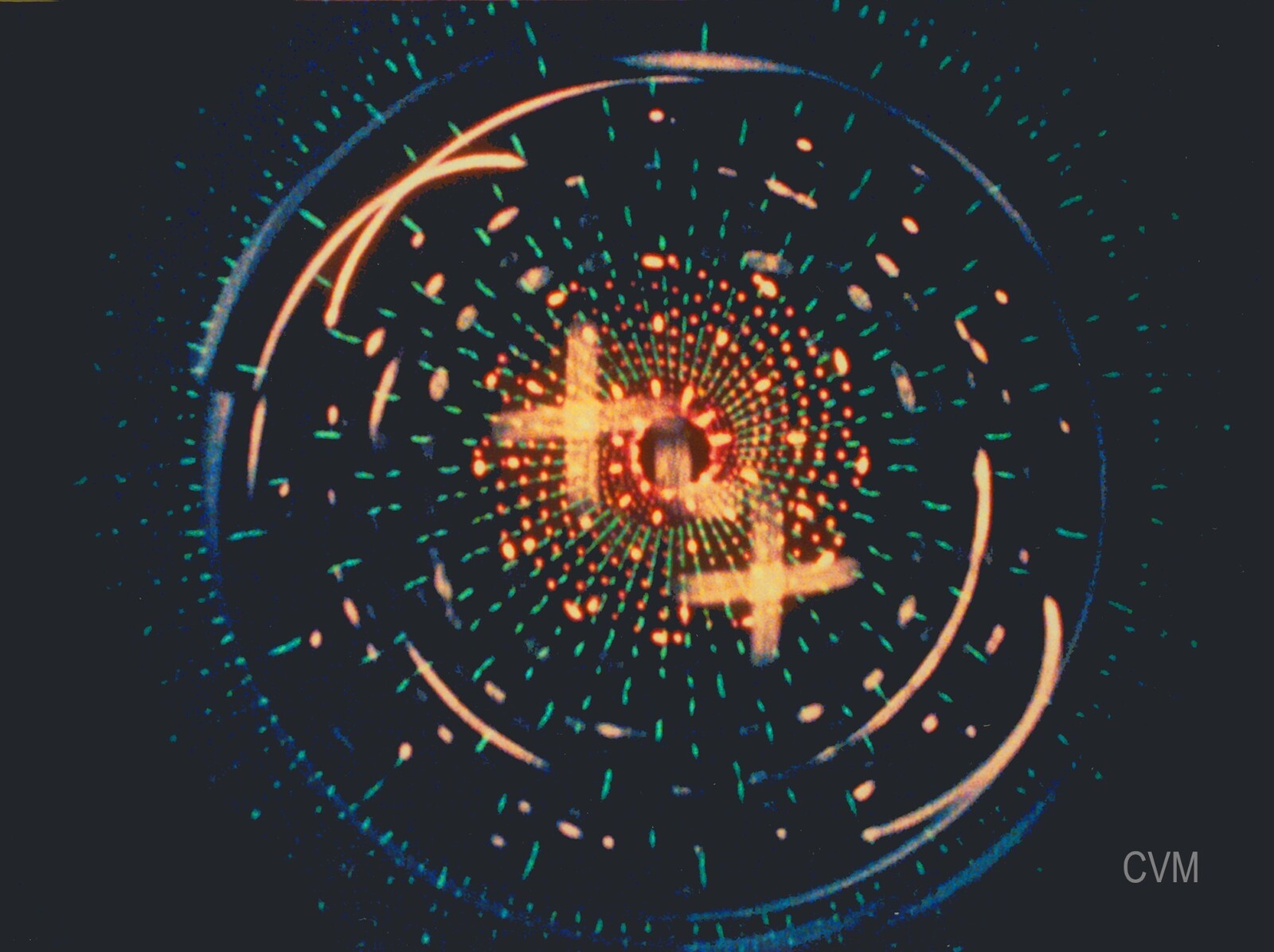Admission:
General $10
Student $7
March 25, 2025, 7pm
Brooklyn, NY 11205
USA
Join us at e-flux Screening Room on Tuesday, March 25th at 7pm for Cosmic Cinema: Jordan Belson and the Vortex Concerts, a talk by Cindy Keefer followed by a screening of select restored films by Jordan Belson including Allures (1961), Meditation (1971), Chakra (1972), Mandala (1953), plus Séance (1959).
This evening will feature an introductory talk by curator/archivist Cindy Keefer, director of the Center for Visual Music (CVM). As Keefer has written, “Belson created abstract films richly woven with cosmological imagery, exploring consciousness, transcendence, and the nature of light itself.” Drawing from her extensive research and direct work with Belson, she will discuss his early work, legacy in expanded cinema and light shows, his cinematic practice, influence from Oskar Fischinger, and his seminal role as Visual Director of the Vortex Concerts (1957–1959)—a groundbreaking series of events at the Morrison Planetarium in San Francisco that merged electronic music and immersive visual effects. The talk will be followed by a digital screening of selected works by Belson, accompanied by an extended discussion.
The event is co-organized together with the Center for Visual Music (CVM). All films except Séance were restored by CVM. You can read more on their programs and archives here.
Films
Mandala (1953, color, sound, 3 minutes)
“A film made from scroll drawings… a calm, meditative imagery of centric arrangements, accompanied by Balinese gamelan music that uncannily mirrors the shimmering textures.” —William Moritz
Séance (1959, 16mm, color, sound, 4 minutes)
“Séance uses interference patterns plus some of the various patterns and images Belson created for the Vortex Concerts at Morrison Planetarium. Soundtrack by Pierre Schaeffer. An early version was screened at the 1958 Brussels World’s Fair.” —Cindy Keefer
Allures (1961, 16mm, color, sound, 8 minutes)
“I think of Allures as a combination of molecular structures and astronomical events mixed with subconscious and subjective phenomena - all happening simultaneously. The beginning is almost purely sensual, the end perhaps totally nonmaterial. It seems to move from matter to spirit in some way.” —Jordan Belson
Meditation (1971, 16mm, color, sound, 6 minutes)
“Meditation is an extended visual metaphor of a mind in meditation. Its strength does not lie in the accuracy with which it represents specific details of meditative states—the “shining ocean,” “luminous waves,” “diving deep through your spiritual eye,” and so on—but in its fidelity to the forms light is given by visual processes within the central nervous system. The specks of light and misty, glowing colors, the symmetry and circles, the mutating forms, are characteristic of hallucinations of many kinds—though they seldom achieve the organic unity of Meditation—and they recur in many variations throughout Belson’s work as a whole.” —William Wees, Light Moving in Time.
Chakra (1972, 16mm, color, sound, 6 minutes)
“Usually the subjects I chose to build images around had some kind of traditional form of their own that I found useful in constructing my film. Take Chakra (1972), for instance. If you study the chakras (the psychic centers in the body), you find that there are seven of them… They’re usually depicted as arranged along the spinal column and described starting from the bottom, going to the top. Each chakra has its own unique characteristics, and centuries of elaboration and analysis have accumulated around these characteristics. … In Chakra, I was able to transfer the traditional order of the chakras into a film, starting with the first (lower) chakra and working up to the seventh (top) chakra…” —Jordan Belson, interview with Scott MacDonald, quoted in A Critical Cinema 3.
For more information, contact program [at] e-flux.com.
Accessibility
– Two flights of stairs lead up to the building’s front entrance at 172 Classon Avenue.
– For elevator access, please RSVP to program@e-flux.com. The building has a freight elevator leading into the e-flux office space. Entrance to the elevator is nearest to 180 Classon Ave (a garage door). We have a ramp for the steps within the space.
– e-flux has an ADA-compliant bathroom. There are no steps between the Screening Room and this bathroom.
